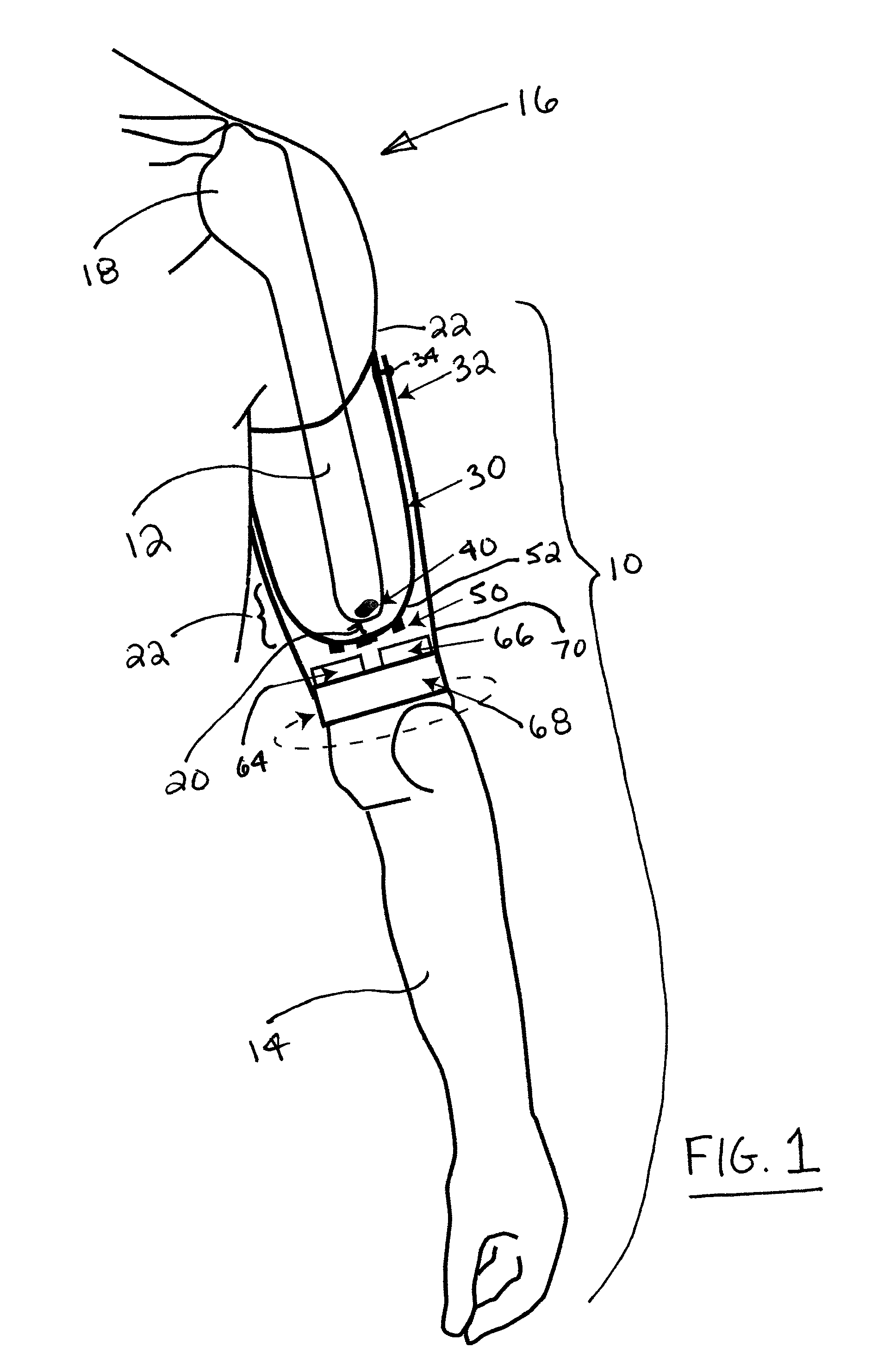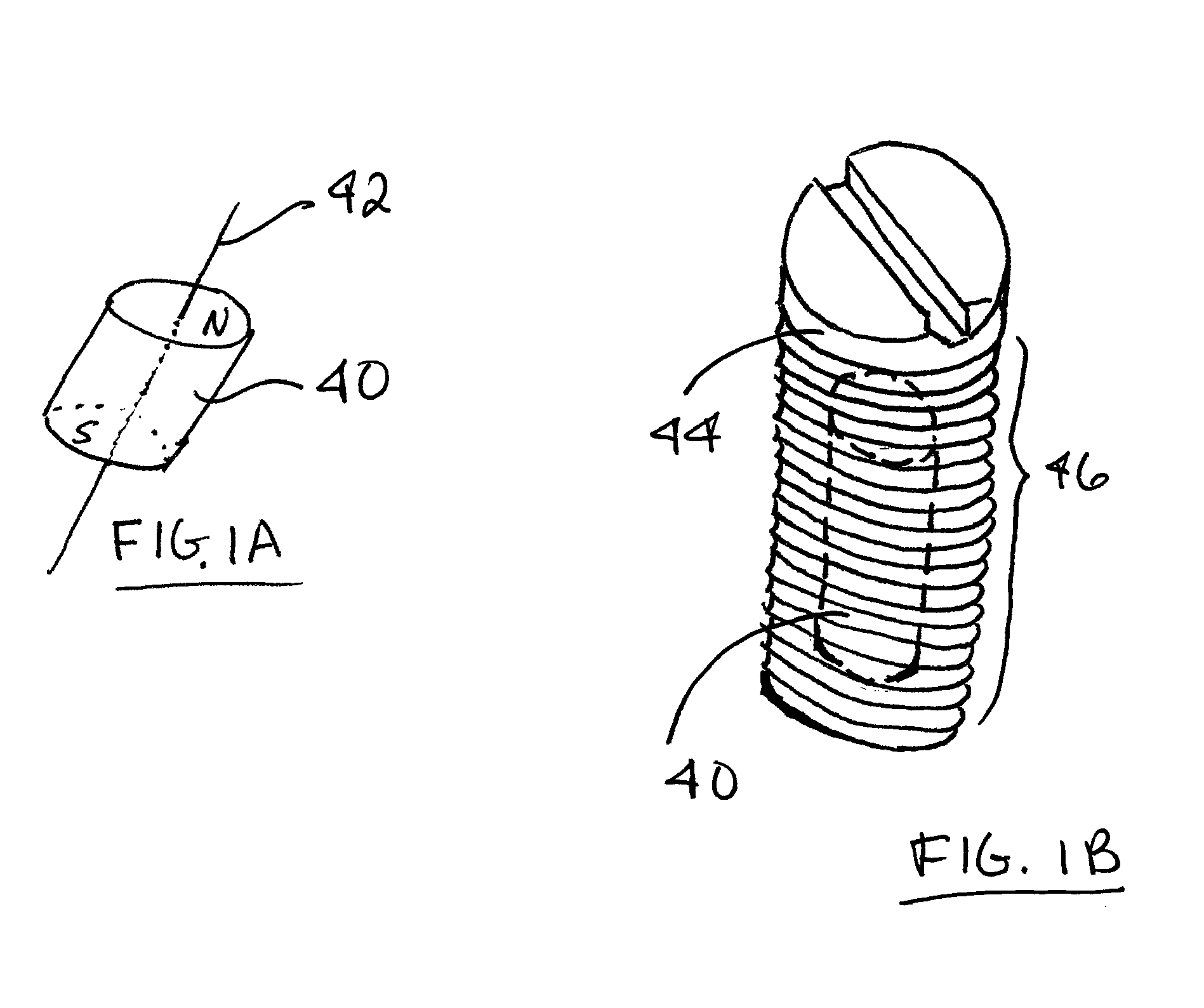Method and apparatus for prosthetic limb rotation control
a technology of rotation control and prosthetic limbs, applied in the field of motorized prosthetic limbs, can solve the problems of slow rotational control of the arm, unnatural, impede the prosthetic control,
- Summary
- Abstract
- Description
- Claims
- Application Information
AI Technical Summary
Benefits of technology
Problems solved by technology
Method used
Image
Examples
examples
[0043]The following examples further illustrate the invention but, of course, should not be construed as in any way limiting its scope.
example i
[0044]A simulation study as described below was conducted with finite element models of the upper arm to demonstrate details of the approach of the invention in sensing the rotation of a residual humerus. Further details of the study and related implementation of the invention are described in Li G, Kuiken T. A. “Modeling of Prosthetic Limb Rotation Control by Sensing Rotation of Residual Arm Bone,”IEEE Trans Biomed Eng., 55(9): 2134-2142, September 2008.
[0045]While the invention also can be used for controlling pronation and supination of the forearm in a below-elbow amputee, the upper arm was chosen in the study due to its greater symmetry allowing a simpler model, and because the upper arm is larger in size than the forearm, which would attenuate the magnetic fields so that a sensitivity analysis is more relevant. This analysis included the effects of arm size, magnet dimensions, relative position of the magnet to magnetic sensors, orientation of the magnet relative to the limb a...
example ii
[0052]Based on the modeling and simulation performed in Example 1, a further study was carried out to implement working physical models of the system for both transradial and transhumeral amputees. The number of sensors required to uniquely determine the location and orientation of the magnet in the distal end of the residual humerus was examined, and various algorithms for tracking a magnet's translation and orientation in space were evaluated using computer simulations. The algorithm with the best performance was then implemented on working physical models of the system. The physical models were used to determine the overall error in the system caused by translations of the magnet in three dimensions, offsets in the position of the magnet within the residual bone, and interference from external magnetic fields.
Methods
A. System Characterization
[0053]For both applications—transradial and transhumeral—the X-axis was taken as along the length of the limb, with positive sense facing di...
PUM
 Login to view more
Login to view more Abstract
Description
Claims
Application Information
 Login to view more
Login to view more - R&D Engineer
- R&D Manager
- IP Professional
- Industry Leading Data Capabilities
- Powerful AI technology
- Patent DNA Extraction
Browse by: Latest US Patents, China's latest patents, Technical Efficacy Thesaurus, Application Domain, Technology Topic.
© 2024 PatSnap. All rights reserved.Legal|Privacy policy|Modern Slavery Act Transparency Statement|Sitemap



